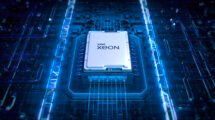According to the University of Virginia (UVA) School of Medicine scientists, sperm cells fasten themselves to their quarry harnessing spiky filaments coming from their heads. This discovery took place after 14 years of painstaking research. The research helps in the current understanding of the sperm head’s protein architecture particularly in an organelle known as the acrosomal matrix.
A researcher at Department of Cell Biology, Dr. John Herr says that one of the main proteins that is present in large quantities in the acrosome is crystallizing into filaments. They now hypothesize that the latter have a role in penetrating the egg.
The protein was found many years back in Dr. Herr’s lab in partnership with the Ph.D. Wladek Minor’s lab. They christened the protein “sperm lysozyme–like protein” (SLLP1).
Minor with his team trapped the protein inside a static crystal. Then they cooled the protein to cryogenic-range temperatures (Below 180 degrees Celcius or less than 292 degrees Fahrenheit) for protection. Finally, it was blasted with X-rays.
By studying how the X-rays were refracted, it was possible to determine the protein’s shape. Heping Zheng, the leading author of the paper describing the discovery, opined that this was a major protein as it’s the first ever Crystal structure originating from a protein present inside the sperm acrosome.
Zheng added that the protein is the first mammalian sperm protein’s structure with a particular characterized oocyte-side binding partner. As per current knowledge, just nine proteins specifically sourced from mammalian sperm possess known structures.
The new insight will guide Herr and contemporary reproductive biologists who are researching the process of fertilization.
The study leverages previous revolutionary research from Herr’s lab – that time showcased on the cover of the journal Biology of Reproduction, which was published on the corresponding paper in March 2015.
Here, it was reported that the protein ESP1 retains its structure during fusion, playing the role of a stabilizer while the remaining parts of the sperm head undergo significant changes.
Zheng expounded on the structure in an article featured in the journal Andrology along with Wladek Minor, Arabinda Mandal, John Herr, Subbarayalu Panneerdoss, Igor A Shumilin and Mahendra D Chordia.




